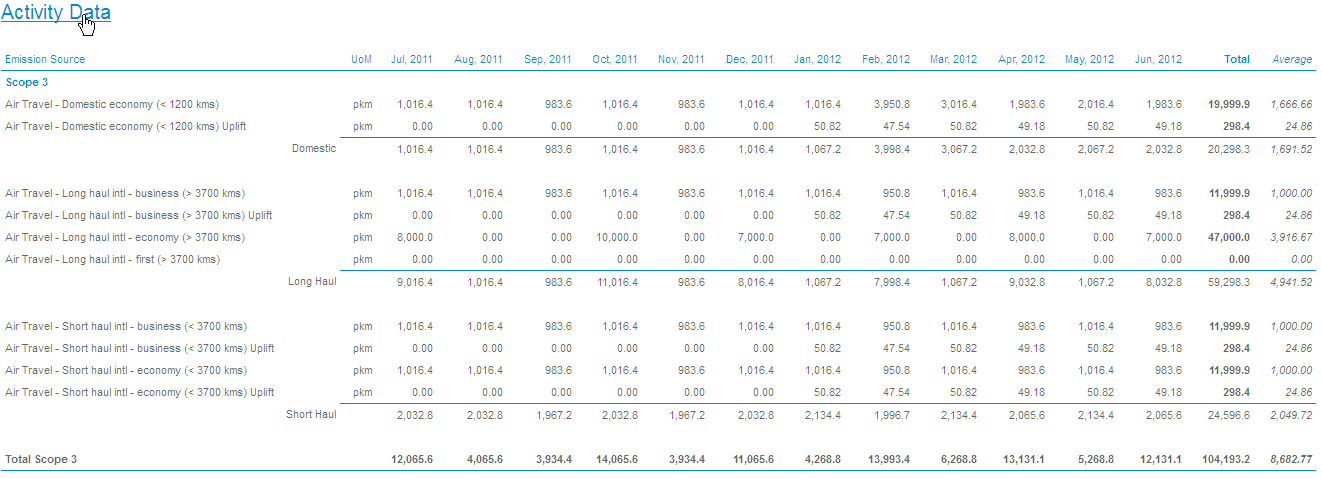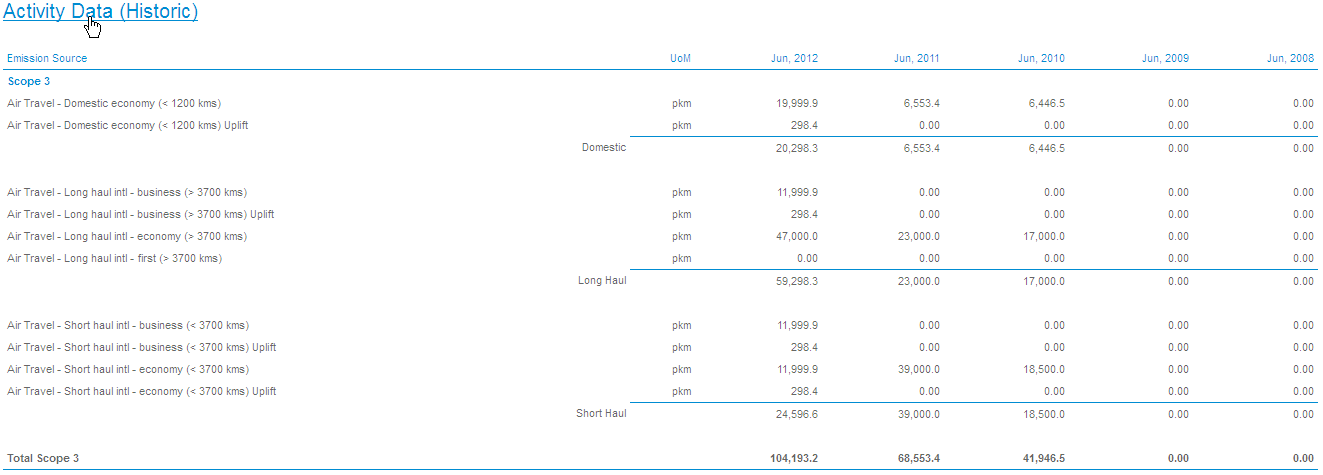Table of Contents
About the DO Role
ESP CSR offers 5 levels of data collection review and approval roles:
- two at group level (Executive Approver and Executive Reviewer);
- three at corporate level (Corporate Approver, Corporate Reviewer and Data Overseer).
The Data Overseer (DO) role involves overseeing data collection processes and tasks and performing the first level of review for data collected periodically.
There may be various people performing DO roles as these can relate to their areas of responsibility, i.e., a property manager may oversee data collection processes and tasks for items like electricity, water usage and waste disposal.
The DO is typically responsible for the following:
- Setup and maintenance of data collection processes and tasks.
- Overseeing task progress for other associated roles, i.e., the Data Source Owner (DSO) and Data Submitter (DS), and their deliverables.
- Performing the first level of review for activity data collected and uploaded periodically via File uploads, Smart Excel Templates, Smart Forms or Manual Entry.
- Providing commentary at reporting time on the associated Data Reviews that addresses any changes in data collection methodology, explanation of movements, trend analysis, plus discussion on any reduction initiatives.
The DO can be responsible for reviewing data in two places within CSR.
Reviewing Quarantined Data
After the DSO or DS have uploaded activity data via File Uploads or Smart Forms and performed their verification checks, the DO will then need to review the data in quarantine to ensure that data's quality is accurate.
These checks will include but not limited to:
- Ensuring the data in quarantine matches the source file;
- Ensuring the data source provided is accurate;
- Analysing any anomalies compared to historic data etc.,
For a more Detailed overview of the Quarantine page, click here for the knowledgebase article.
Reviewing Data in Data Reviews
The DO can review all data entered against the relevant Inventory associated with their processes and tasks on the data review page.
This includes data uploaded via Manual Entry, Smart Excel Templates, File Uploads and Smart Forms.
The party entering or uploading the activity data should verify it in the system before the DO performs their review in the Data Review Manager.
The DO can also leave commentary at reporting time which addresses data collection methodology, trend analysis and reduction initiatives.
This would usually be the first step in completing a Data Review for the selected reporting time.
The DO can review activity data on any Data Reviews by following the below steps:
- Go to Review & Approve > Data Reviews.
- Select the reporting period you wish to review, i.e., FY22.
- Choose the data review associated with your process.
The data review will have the same data collection group as your processes. - On the Data Review Page, you can review tables containing activity data summarised at the corporate level for the data collection period as well as historic activity data. These tables should be read with reference to the Data Table Guidelines for Interpretation.
- Review the Activity Data table, as displayed below. Ensure the data has firstly been verified by the DSO and DS.
If the data in this table is an aggregation of more detailed data, you can view the unaggregated data by running the Location Compare or Usage and expenditure by location and inventory report located in Reports > Reports on the top menu. - Review the Activity Data table, as displayed below. Ensure the data has firstly been verified by the DSO and DS.
Beneath the Activity Data and Emissions tables, you can view historic activity data in the Activity Data (Historic) table, as displayed below. Using this table you can compare current period activity data to prior periods. This is very useful for assessing at a glance whether or not your current activity data appears reasonable, and for analysing and commenting on usage trends over time.
- Review the Activity Data table, as displayed below. Ensure the data has firstly been verified by the DSO and DS.
- Where activity data has been collected in association with a CSR data collection task, you can review task audit trail information via the Related Tasks tab located on the Data Review page.
- Add any required notes based on your analysis as shown in the next section.
Good to know
- Setting up a Data Review Commentary task is recommended because it can contain detailed notes and instructions for the DO on providing commentary. In addition, when all related tasks are set to 'Complete' an e-mail notification is sent to the Corporate Reviewer to advise that the DO review is complete.
- If you wish to view monthly historic data, run the Usage and expenditure by location and inventory or Emissions and Resources By Data Collection Group and Inventory report.
The DO can leave commentary on any Data Reviews by following the below steps:
- Go to Review & Approve > Data Reviews.
- Select the reporting period you wish to report against, i.e., FY22.
- Choose the data review associated with your process.
The data review will have the same data collection group as your processes. - You can add notes by either:
A. Selecting the Add comments and approval box.Than type in any relevant notes associated with the data tasks and processes completed.
Check that commentary is selected in the box next to continueB. Selecting the Comments and Approval tab, than selecting add a note or add a document to upload any relevant notes and documents against the data review which may not have been captured in the data collection stage.
DO reporting review commentary should address:
- Data collection methodology changes are usually provided by the DO because they oversee the collection of periodic activity data. This should cover an overview of:
- The data collection process
- The source
- Data UOM
- Frequency of collection
- Source owner and backup
- Whether or not detailed DSO procedures exist and where they can be located
- Commentary and analysis on data completeness including need for data uplifts
- Any methodology weaknesses.
An example:
The corporate data file is for payments made by staff utilising their corporate credit cards (company issued), so the file covers the claims made by staff for credit card usage.
The invoices file, covers 'on account' travel with the taxi companies (i.e. derived from invoices received from the taxi company), whether this is through the use of a taxi chit or statement of account number by staff when booking/travelling.
The invoices data file is generated from the SAP system and the corp cards file from Pro-Master each month. A process document explaining how to generate the files has been stored in BraveGen CSR.
Data Uplifts: The DSO was asked to try and source data for taxis paid on staff expense claims. A data file was produced from SAP in which taxi and rental car claim transactions are combined which doesn't therefore provide a robust basis upon which to calculate a data uplift. Recommend that other reporting options to capture taxi travel leakage are subsequently explored.
- Trend analysis: the DO will provide analysis of activity data and statistics only (not emissions) for the reporting period.
The DO review should cover the trends observed in reporting period activity data including any known drivers/influences of those trends that they are aware of e.g.: seasonal factors, policies, changing behaviour or budget changes.
Commentary should also reference the previous reporting period for comparison purposes. Is there a general trend? Is usage higher or lower than previous periods. Is the change in usage significant? Were there any months that bucked the trend, what was the reason for this, etc.? Percentage changes and explanations for these changes should be provided.
For the benefit of subsequent reviewers and auditors, the DO should specify the extent of the review they have undertaken and which reports or system pages were referred to.
An example:
Current year monthly activity data was reviewed with reference to prior year monthly data using the DR Manager Reports and the 'Emissions and Activity Data Over Time Report', the current years monthly data appears reasonable alongside the policies and drivers discussed below.
Total taxi use is down 11% from last year and fell 26% in the final 6 months compared to the first 6 months. First half taxi use was 5% lower than the equivalent period in 2011 and second half taxi use was 19% lower than the equivalent period in 2011. Whilst taxi use would've declined as a result of decreases in air travel and hotel stays, policy measures and supporting initiatives have also contributed to declined taxi use, particularly in the last 6 months. - Reduction initiatives: If there are reduction initiatives in place then these should be discussed. Even if there are none this could be stated with any explanatory comments on policy and behavioural factors that influence the emission source.
An example:
The Taxi/Private Vehicle Use Policy Statement stipulates that employees must take measures to minimise taxi costs which includes sharing a taxi whenever possible and hiring a car if this would be cheaper than using a taxi.
This policy has been backed up with a number of initiatives. The preferred taxi providers (Green cabs, corporate cabs, co-op taxis, wellington combined and first direct (ChCh)), have agreed to set fares in regular routes e.g. city- airport, city to city, etc.
Two upgrades this year to the share-a-taxi tool, in Dec 2011 the system was changed so now have employee number as a mandatory field which is used for the share-a-taxi look ups, this means that staff on outlook are new sent share-a-taxi emails where they didn't get them prior to this upgrade.
Also in May 2012 a better way to match share-a-taxi candidates was implemented, widening the search to include planes arriving/ departing within 15 minutes of each other rather than just the same flight. These two changes combined means the hit rate of employee matches has increased overall by about 45%."




